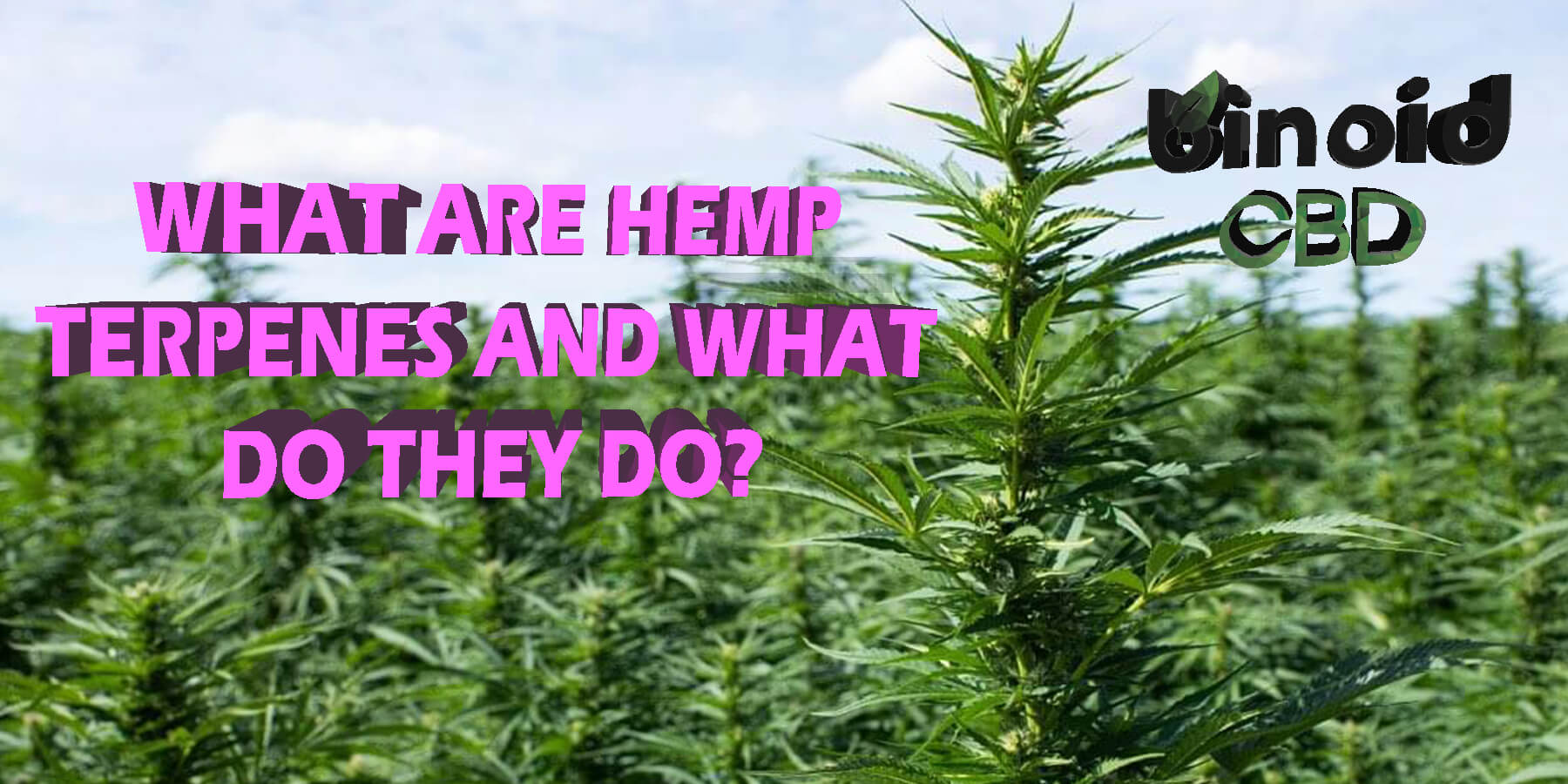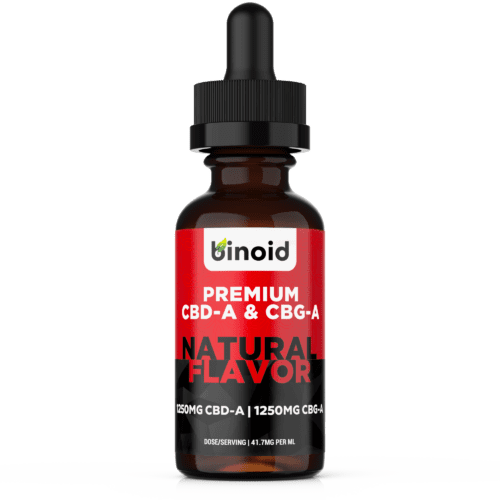We spend a lot of time talking about cannabinoids when we discuss the cannabis plant, and for good reason. Cannabinoids are fascinating compounds that are primarily responsible for the effects of cannabis, which are unique from what other plants have to offer. But any experienced enthusiast will tell you that cannabinoids are not the only part of the hemp plant that make it so desirable.
The unique relationship between two classes of compounds, CBD and CBG, has a lot to do with why cannabis makes us feel the way it does, and why some strains have effects that are unique from others. You’ll walk away with a strong understanding of the hemp plant’s full chemical composition, and why this knowledge plays such a major role in determining whether or not a particular CBD or CBG product can satisfy your more specific needs.
To Buy CBD Products Click Here
-
Product on sale
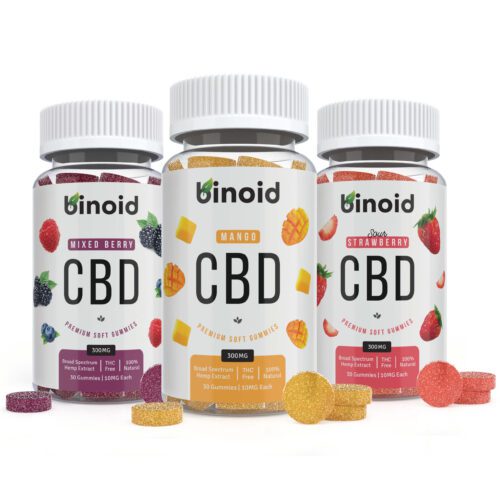 CBD Gummies$26.99
CBD Gummies$26.99$49.99
Hemp Plant’s Terpene Compounds
To understand what terpenes are, we need to first discuss the chemical composition of the hemp plant briefly. When we talk about the desirable compounds in hemp, we’re referring to the flowering buds of the female hemp plant. This is where you’ll find all of the cannabinoids like CBD, CBG, CBN and so on, as well as the rich array of terpenes that naturally occur.
Cannabinoids, as most of us know, are compounds that are essentially unique to cannabis. What they do is get fed to the endocannabinoid system of the body, which regulates bodily processes by sending these compounds to cannabinoid receptors found within the body’s many systems. This process supports homeostasis so that we may feel a sense of equilibrium throughout the body.
Many mistakenly believe that cannabinoids are solely responsible for the unique effects of the hemp plant. But this isn’t exactly true. Cannabinoids play a major role, yes, but other compounds offer properties as well. Terpenes have a lot to do with the effects of cannabis, as do, to a lesser extent, flavonoids, which are another class of compounds found within the plant’s flower.
What are Hemp Terpenes, and What Do They Do?
Terpenes are plant compounds that are not unique to cannabis. In fact, every plant has terpenes. These compounds do a lot for the plant itself. They determine the color, aroma and flavor of a particular plant, while offering properties that serve as the plant’s defense. These terpenes may fend off diseases and predators so that the plant has a better chance of survival.
But, when extracting terpenes from the plant, we end up with compounds rich in properties that may be useful to us. For example, lavender is a plant known for its calming properties, and many people also use it for headaches. What’s giving lavender these abilities are its terpenes, which are concentrated when the plant’s chemical composition extracted to produce an essential oil.
-
Product on sale
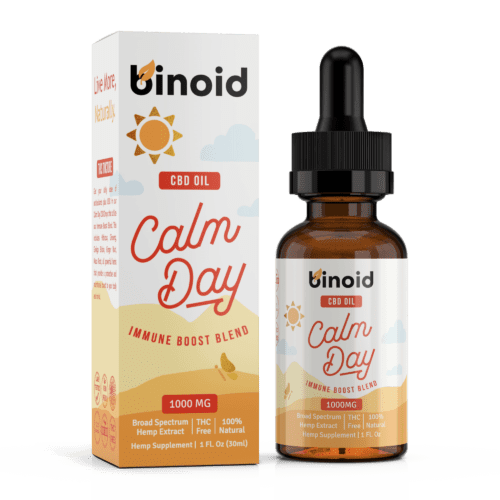 Binoid Calm Day CBD Oil – Immune Boost$28.99
Binoid Calm Day CBD Oil – Immune Boost$28.99$64.99
Most Commonly Found Terpenes in Cannabis
There are over one hundred terpenes that can naturally occur in the cannabis plant. However, these are the most commonly prominent ones.
Myrcene
Myrcene is perhaps the best-known terpene in the cannabis plant, as it plays a major role in determining the difference between a sativa strain and an Indica strain, which we will be elaborating on shortly. Myrcene has a grassy flavor and is commonly found in culinary herbs such as thyme. It’s most widely known for its calming properties which are particularly useful to those who have anxiety as well as sleeping troubles, and it may have a relaxing effect on the muscles, as well as anti-inflammatory properties.
Alpha-Pinene
Alpha-pinene is another well-known terpene found in cannabis, and its pine-like flavor and aroma give cannabis that characteristic flavor note. This terpene also seems to have anti-inflammatory properties that are particularly helpful to those who have intestinal issues, as well as respiratory inflammation.
D-Limonene
D-limonene is a terpene commonly found in citrus, which is also frequently found in high amounts in cannabis. It has a lemony flavor that brightens up the flavor profile of the hemp plant. This terpene is known for its antibacterial properties, but it also has a reputation for potentially helping with depression by uplifting mood.
Linalool
Linalool is one of the dominant compounds in the lavender plant, so it’s not surprising that this terpene plays a role in hemp’s calming properties. Linalool may aid in anxiety relief and insomnia relief as well. And, it has a lavender-like aroma that can give cannabis a pleasant floral quality.
-
Product on sale
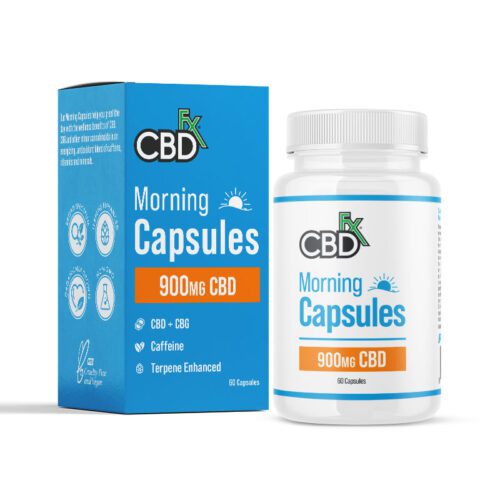 CBDfx CBD + CBG Morning Capsules 900mg$53.99
CBDfx CBD + CBG Morning Capsules 900mg$53.99$69.99
Humulene
Humulene is known for its spicy and woodsy aroma which is often compared to that of clove, and others compare its flavor to that of beer. Primarily, humulene is known as an appetite suppressant that may be able to curve cravings, especially of the sugary nature.
Nerolidol
Nerolidol gets its name from neroli, a plant that has this terpene as its main compound. It’s known for its antifungal, antibacterial and anti-inflammatory properties, which may play a role in pain management while also helping with infections. Plus, it seems to offer calming properties to both the mind and the muscles.
Caryophyllene
Caryophyllene is yet another terpene known for its spiciness. It may offer antibacterial, anti-inflammatory, anti-anxiety, and anti-depressant qualities all at once. What’s fascinating about this terpene is that it’s the only one known for actually interacting with cannabinoid receptors in the body, in the way that cannabinoids like CBD do.
Bisabolol
Bisabolol is a light, floral terpene with anti-inflammatory properties, and it may also be able to calm irritation of the skin, making it quite useful for topical application.
Ocimene
Ocimene has a sweet yet woodsy flavor and aroma, adding to the aromatic nature of cannabis. It offers antifungal properties to the human body.
Geraniol
Geraniol has a floral fragrance that’s notably sweet. It seems to offer uplifting properties to the mood and is one of the few terpenes that may have an impact on neuropathy.
Terpineol
Terpineol is a calming terpene thanks to its noted anxiolytic properties. It has a lilac-like fragrance which many cannabis users find highly appealing.
-
Product on sale
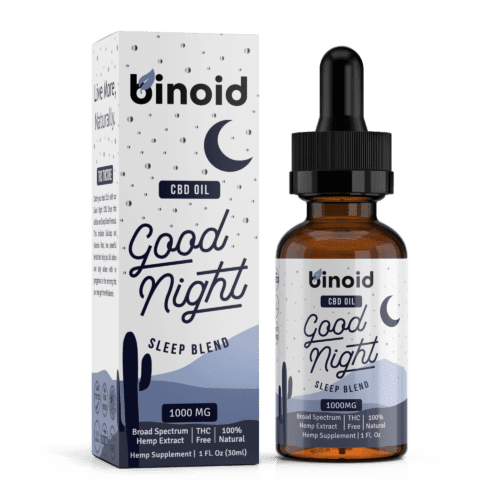 Binoid Good Night CBD Oil – Sleep Blend$28.99
Binoid Good Night CBD Oil – Sleep Blend$28.99$64.99
How Terpenes are Derived
So, if a product contains terpenes, where are those terpenes coming from? You may be interested to know that there is a multitude of ways to extract terpenes from plant material in order to add them to a formula.
Extracting terpenes is much like extracting cannabinoids. The most popular method as of now is the CO2 method, which is a method familiar to anyone who studies hemp. This method lifts compounds from plant material using pressurized CO2, in a way that maintains maximum purity levels as well as chemical stability.
But where those terpenes come from depends on who is making the product. Let’s go over the two major ways in which terpenes can be taken from plants and added to a particular good.
#1: From the Cannabis Plant (Marijuana and Hemp)
The first way to derive terpenes is to extract them from the actual cannabis plant, from which the cannabinoids are also extracted. This is a logical way of going about things, and adds to the authenticity of the product, as you’re consuming the terpenes along with the cannabinoids in the way that nature intended.
Typically, these compounds are all extracted together, so that you end up with a hemp concentrate that naturally contains not just all of the cannabinoids and terpenes that were present in the plant material, but also the additional compounds like the flavonoids and phytonutrients. From there, certain compounds can be isolated and removed if the manufacturer chooses to do so.
#2: From Other Plant Material
The other method is to extract terpenes from other plant sources. This may seem counterproductive but allow us to explain.
Let’s say a manufacturer wants to make a CBD product with a high linalool content. Linalool is a calming terpene that naturally occurs in cannabis, but maybe the plant material being used has a very low amount. So, they may decide to extract the linalool from the lavender plant, which has a very high level of this terpene. Then, they can add the extracted linalool to the CBD product to give it a higher dose of the compound than would naturally exist in the hemp plant alone.
Are Terpenes Safe?
Terpenes are widely considered safe, as long as they are consumed in small doses, as they naturally occur in nature. The hemp products that contain terpenes are produced in a safe manner to ensure that your body receives the amount of terpenes that it normally would were it consuming a plant in its natural form. In other words, you don’t need to be nervous about experimenting with terpenes. After all, whenever we eat fruits, herbs or vegetables, we’re consuming generous amounts of these terpenes.
Are Terpenes Legal?
Terpenes are completely legal. They are not considered intoxicating, and besides that, terpenes are found in all plants, which means that we’re constantly consuming terpenes whether we’re aware of that fact or not. Making terpenes illegal would mean that we would not be able to consume fruits, vegetables or other plant matter.
-
Product on sale
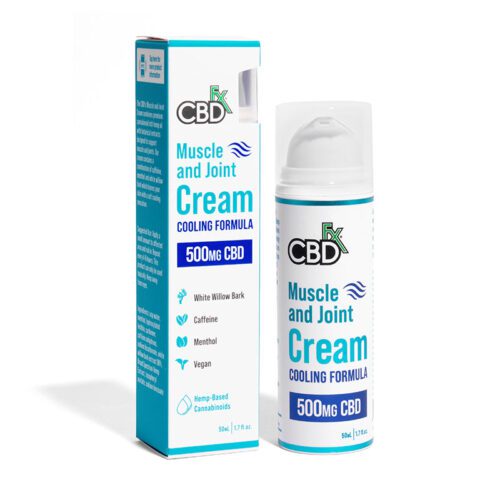 CBDfx CBD Cream Muscle & Joint 500mg$27.99
CBDfx CBD Cream Muscle & Joint 500mg$27.99$34.99
Terpenes and the Entourage Effect
Now, you’ve probably come to realize that terpenes all on their own can be quite useful. But, when taken along with cannabinoids, you may get a better experience overall. When the hemp plant’s entire chemical composition is consumed at once, users experience what’s called the entourage effect. What this means is that the presence of every cannabinoid, terpene and other compound found in a particular hemp plant leads to a synergistic effect in which the overall experience is more bioavailable and potent.
Then how do you get the entourage effect? Well, there are two ways.
- Utilizing the pure flower of the hemp plant
- Opting for a full spectrum hemp product
Both types offer the complete spectrum of hemp compounds as they exist in nature.
Different Terpene Strains and What This Means
Now, here’s the thing about terpenes. Not all cannabis plants have the exact same ones, or in the exact same composition. In other words, some cannabis plants may have more myrcene than others. And some may have high levels of d-limonene, while others have a fraction of that amount.
So, what gives? Well, maybe you’ve heard of cannabis strains. Think of cannabis strains like different breeds of a cat or dog. Ultimately, they’re all the same species, and so you can count on certain constants throughout. Subtle changes though in the chemical composition make for slightly different effects.
A cannabis strain is mainly determined by its composition of terpenes. What this means is that each strain of hemp has its own terpene profile. Strains like OG Kush, Pineapple Express, Blue Dream and Girlscout Cookies each produce different effects, because they all have a different composition of terpenes, which play a major role in how each strain makes you feel, and what it’s capable of. Maybe you’ve noticed that some strains make you feel more chill and relaxed, while others actually energize you. That’s because of the difference between the two strains, according primarily to their terpenes.
Strains are split into three categories:
- Sativa
- Indica
- Hybrid
The main determining factor between a sativa strain and an Indica strain is its myrcene level. A strain with more than 0.5 percent myrcene in its total chemical composition is considered an Indica, as it produces more relaxing, sedating effects, and is felt more in the body than in the mind. A strain with less than that amount is classified as a sativa, which is known more for its stimulating effects as well as its cerebral properties that affect the mind’s state. Then, there are hybrid strains, which are crossbred between both an Indica and sativa.
This is important to keep in mind because most cannabis users eventually find that some strains are more capable of suiting their needs than others. Therefore, if they’re seeking out a CBD or CBG product for specific results, they can choose one based on the strain that they’ve come to like. Note that the words “strain” and “terpene profile” are often used interchangeably for marketing purposes, so if you see either of these options, choose the name of the strain that most appeals to you.
Also, note that it’s worth experimenting with different strains. You may find that there is one out there that gives you that sweet spot, where all of its unique properties enhance the way that you feel according to your specific needs. Very rarely will you try a strain that gives you highly undesirable effects, because ultimately, hemp isn’t known for negative side effects.
Why Terpenes are Worth Trying
Now, you have a good idea of what terpenes are and what they do. It’s absolutely worth introducing terpenes into your routine, as they can support the absorption of cannabinoids due to their synergistic properties, while giving you some additional properties as well that can potentially help you.
Hemp Products Containing Terpenes
The good news is that it’s very easy to find commercially available hemp products that contain terpenes. In fact, as you read through the list below, you may find that you’ve actually been taking terpenes all along without being aware of it.
Full Spectrum Hemp Products
Full spectrum hemp is the result of extracting the compounds from the hemp plant and allowing that extract to remain intact, in terms of its chemical makeup. This type of product contains every compound that occurs in hemp, which means that you’ll be receiving the full variety of terpenes in that particular strain. Full spectrum hemp products come in various delivery methods, strengths and so on.
Broad Spectrum Hemp Products
Full spectrum hemp is a THC-free alternative to broad spectrum hemp. It simply means that the extract produced from the hemp plant has had its THC level isolated and removed. This will still give you the variety of terpenes in the plant, but it will not technically give you the entourage effect, as one compound is missing from the final product.
-
Product on sale
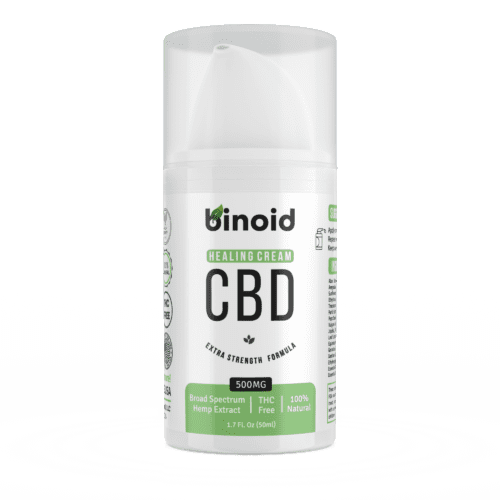 Binoid Healing Cream – Extra Strength$39.99
Binoid Healing Cream – Extra Strength$39.99$74.99
Products with Added Terpenes
Additionally, you can find hemp products that have had terpenes manually added to them. Many companies do this to allow their products to produce more specific effects. For instance, a CBD product aimed at those looking for help with sleeping may contain an additional amount of linalool, a terpene known for its calming abilities.
Hemp Flower Products
Pure hemp flower will naturally contain the terpenes that occur in the plant. Hemp flower is most commonly smoked, but it can also be vaporized or cooked with.
Concentrates
Concentrates including waxes, resins, rosins, hashes, and shatters will also give you a full spectrum experience naturally, and the terpenes will be felt more potently due to the concentrated nature of this type of product.
Pure Terpene Extracts
Yes, you can find pure terpene isolate extracts. These are not as commercially available, but they do exist. How they should be taken or blended with hemp depends on the unique nature of the formula and the concentration level.
How Different Delivery Methods Can Produce Unqiue Terpene Effects
We know that when it comes to taking cannabinoids, the manner in which they absorb into the body can play a role in how quickly the effects are felt, how long the effects last and how potently they activate in the system. The same goes for terpenes, as logic would conclude. Apply your understanding of different delivery methods for cannabinoids to that of terpenes. In other words, vaping terpenes will produce stronger, faster-acting effects, while ingesting them will produce more subtle, longer-lasting effects that take longer to peak in the body.
Terpenes and Milligram Strength
The milligram strength of a hemp product containing terpenes, such as a full or broad spectrum-based product, doesn’t just determine how strong the CBD and other cannabinoids are, but the terpenes as well. That’s because the milligram strength refers to the hemp itself, not just the CBD. Hence, higher milligram strengths of CBD products will give you more milligrams of terpenes as well.
How Terpenes Interact with CBD and CBG
So, how, exactly, do terpenes interact with CBD and CBG specifically? Well, we talked about the synergistic properties of cannabinoids and terpenes, so naturally, you can conclude that taking terpenes along with either of these cannabinoids, or both of them at once, will likely boost the effectiveness of both the terpenes and the cannabinoids. This means that if you want to get as much out of hemp as possible, it’s a good idea to consider taking a CBD or CBG product that contains a variety of terpenes.
Terpenes Really Do Make the CBD World Go Round
The cannabis plant has given us CBD, and that alone makes it a worthwhile endeavor. But, if you’re looking to really personalize your hemp experience based on your individual wellness goals, then you’re going to want to take a closer look at terpenes. As you can see, terpenes offer effects that are just as useful as those provided by cannabinoids like cannabidiol, cannabigerol and so on.
The next time you go shopping for hemp goods, make sure that you don’t sleep on these fascinating, property-rich compounds.
If you are looking for the best Hemp CBD Products filled with beneficial Terpenes, click here!
To Buy CBD Products Click Here
-
Product on sale
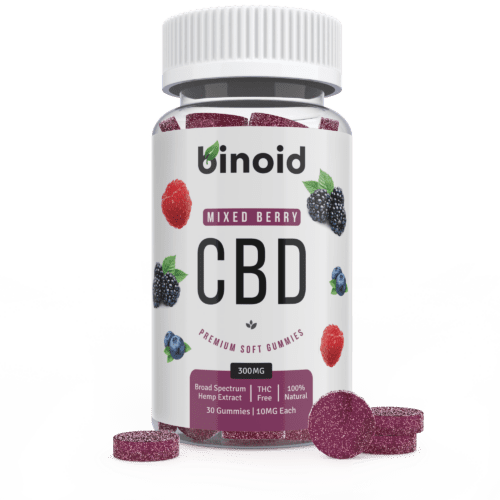 Binoid Gummies – Mixed Berry$26.99
Binoid Gummies – Mixed Berry$26.99$49.99

